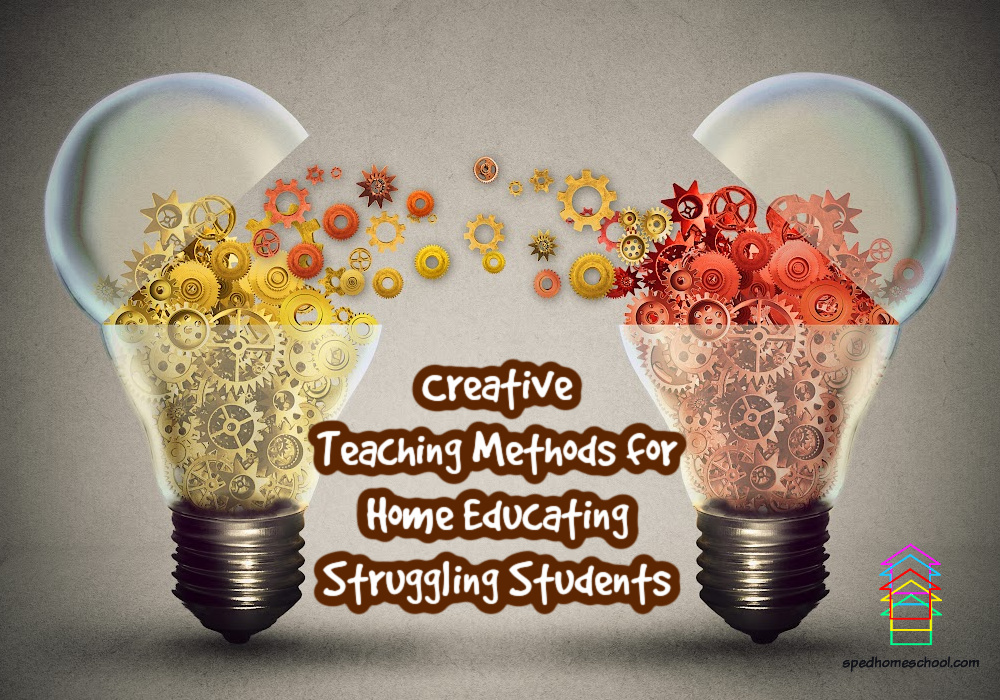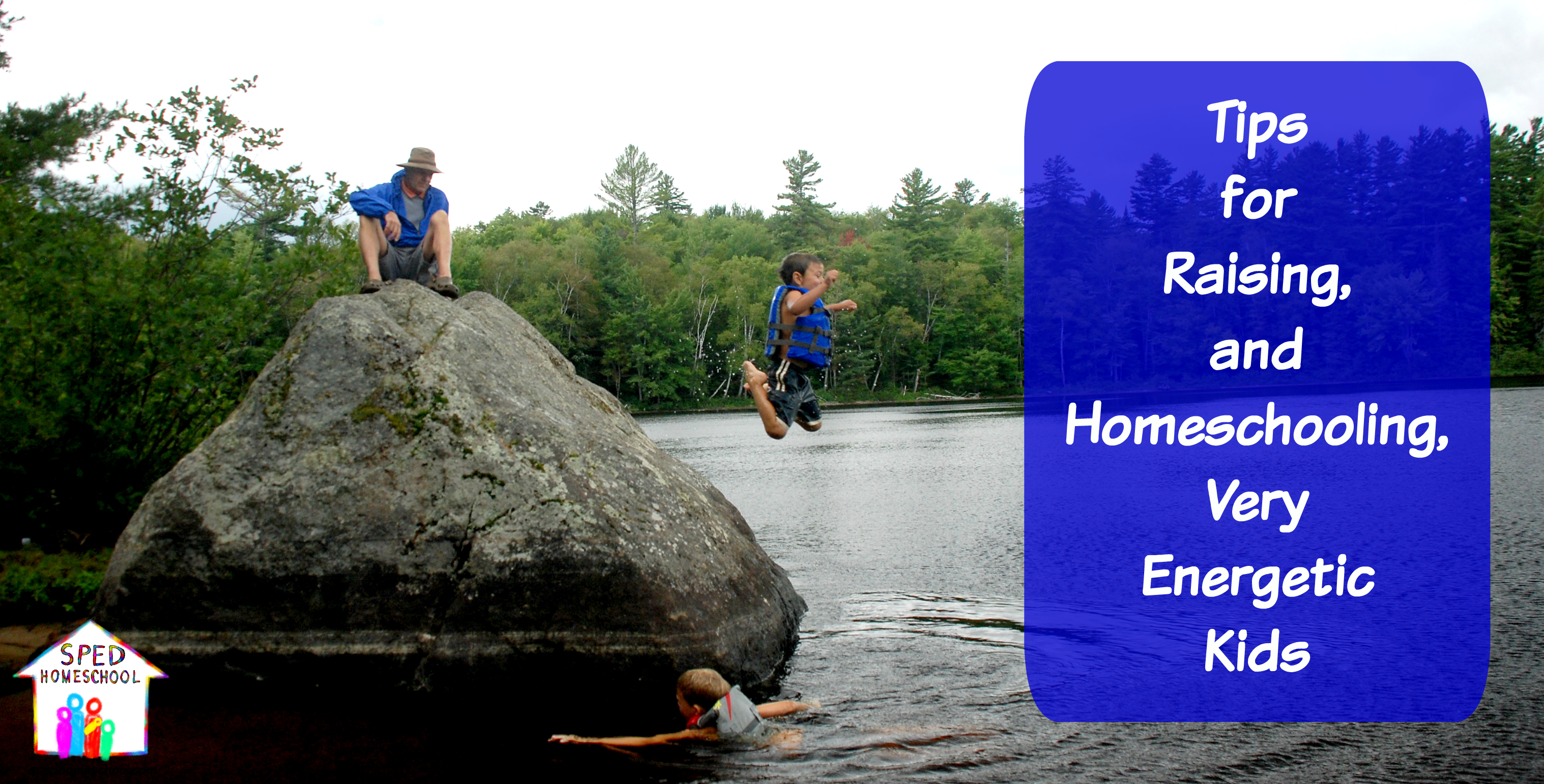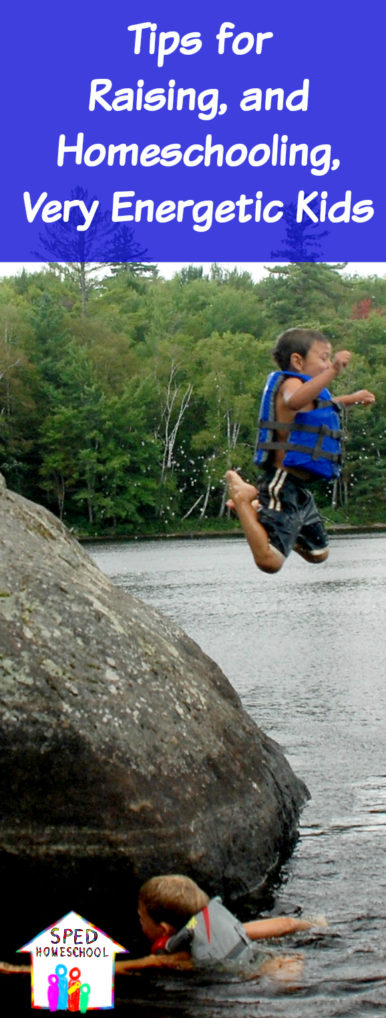
by the SPED Homeschool Team
Running out of creative ways to help your struggling student connect with learning material? Here are some great suggestions SPED Homeschool team members Dawn Spence, Amy Vickrey, and Peggy Ployhar have used in home educating their own struggling learners over the years.
Reading
Teach sight words. Both my boys struggle with auditory processing, and as a result phonics is a struggle. But, they do well with memorization, so we use sight words to teach reading, and then continue to work on phonics through spelling as well as through other subjects and activities. This approach has allowed them to read sooner, and more quickly become independent learners. My kids love books and reading, so this is a win-win! – Amy Vickrey
Include movement. Put words on notecards or purchase magnetic words and allow your student to create phrases, sentences, and responses by arranging and re-arranging the pre-written words. – Peggy Ployhar
Math
Find geometric objects. When studying shapes and geometry concepts, have your student(s) do a geometric treasure hunt. – Dawn Spence
Make a number line. Make a physical number line or use movement to help with moving numbers up and down a number line alongside addition and subtraction problems. – Dawn Spence.
Fold paper to prove theorems. For helping an older student understand geometry concepts, use paper folding technique to help translate theoretical concepts into relational concepts. Here is a resource that shows you how. – Peggy Ployhar
Electronically graph equations. For students who benefit from learning math visually, use an Excel spreadsheet to graph algebraic equations. Here is a resource that walks you through how to use Excel this way. – Peggy Ployhar
Science
Make crafts meaningful. When studying about the layers of the earth, have them create the layers in playdoh or Rice Krispie treats. Or, when studying anything with the body – building the layers of skin, the cell, or the lungs makes it more real and easier to relate to when your student can manipulate and create replicas of what they are learning. – Dawn Spence
Embrace experiments. Experiments can be messy and time consuming, but they provide students with experiences they are less likely to forget than if they had just read about a science concept in a book or even watched a video with an experiment. – Peggy Ployhar
History
Act it out. When studying history, have your children act out a scene or historical event. To make it even more theatrical, have them put together a costume from materials they can find around the house. Then while you read about the event from a history book, textbook, or historical fiction book, have your children act out the parts for the person they are portraying. – Peggy Ployhar
Listen to audiobooks. For history, we have been listening to fiction and nonfiction historical books in the car. Story of the World and various historical fiction have filled our time as we drive to appointments around town. This has done two things – increased my children’s love of history, and increased their listening skills. It also has gotten my oldest to pick up and read these books later that previously he hadn’t shown any interest in. Because he heard them first, he enjoyed going back and reading through them to get more details. This method can also be helpful for students who enjoy listening to the books while following along. – Amy Vickrey
Spark interests with videos and documentaries. There are many great shows on science, history, and innovation/manufacturing. These videos spark interest by exposing students to new topics. For instance, after watching a video about automobiles, I found my son pouring through books on automotive fundamentals to help him better understand what he learned from the videos. There are plans to make a rocket-propelled bike or car…I’m not sure how, but I am excited that he is trying to figure out how. – Amy Vickrey
Writing
Cultivate storytelling. A way we helped our children develop writing skills was to take turns telling stories while on family hikes. Each family member would get a turn and the other family members contributed a person, place or thing that had to be included in the story. It was always fun to hear what my kids would come up with and since there was no handwriting involved and the storytelling made the hike go faster there was no complaining either. – Peggy Ployhar
Take advantage of technology. Since handwriting is still a challenge, we have used voice to text on Google Docs and Pages (iPad). Both programs have worked well, and are free. Speaking in short phrases is best when using this technology. Moreover, the usage of this technology helped my son with his enunciation of certain words. – Amy Vickrey
Still looking for more creative ideas for how to home educate your struggling learner? Check out these additional resources from our website.




